
The afro-comb’s origins can be traced as far back as 6000 years ago to Ancient Egypt, and its distinguishable design—upright with long teeth—is universally recognizeable across cultures. Swedish industrial designer Simon Skinner tells Jareh Das the story that led him to reimagine the iconic object, and delves deep into the inspiration and process behind some of his most unique creations.
They can be worn in the hair as adornments, serving as a visible reminder to reaffirm a collective cultural identity of not straightening one's hair to conform with mainstream western codes of conduct on Black hair. For a long time, they’ve symbolized far more than their function; in the 1970s, the version with a clenched fist as a handle was a symbol of resistance to oppression during the American civil rights movements. The Afro comb has been prevalent around the world for millennia, and Swedish industrial designer Simon Skinner is reimagining it.
In his latest project, titled “Syntax,” Skinner has produced a line of his own original combs, continuing this lineage of cultural and political symbolism they represent by exploring how these historically charged objects connect to hair and beauty rituals. The resulting series consists of handcrafted afro combs made from resin, aluminium and plastic accompanied by a vanity table in birch with aluminium gilded edges, intended as an intimate safe space for self-care.
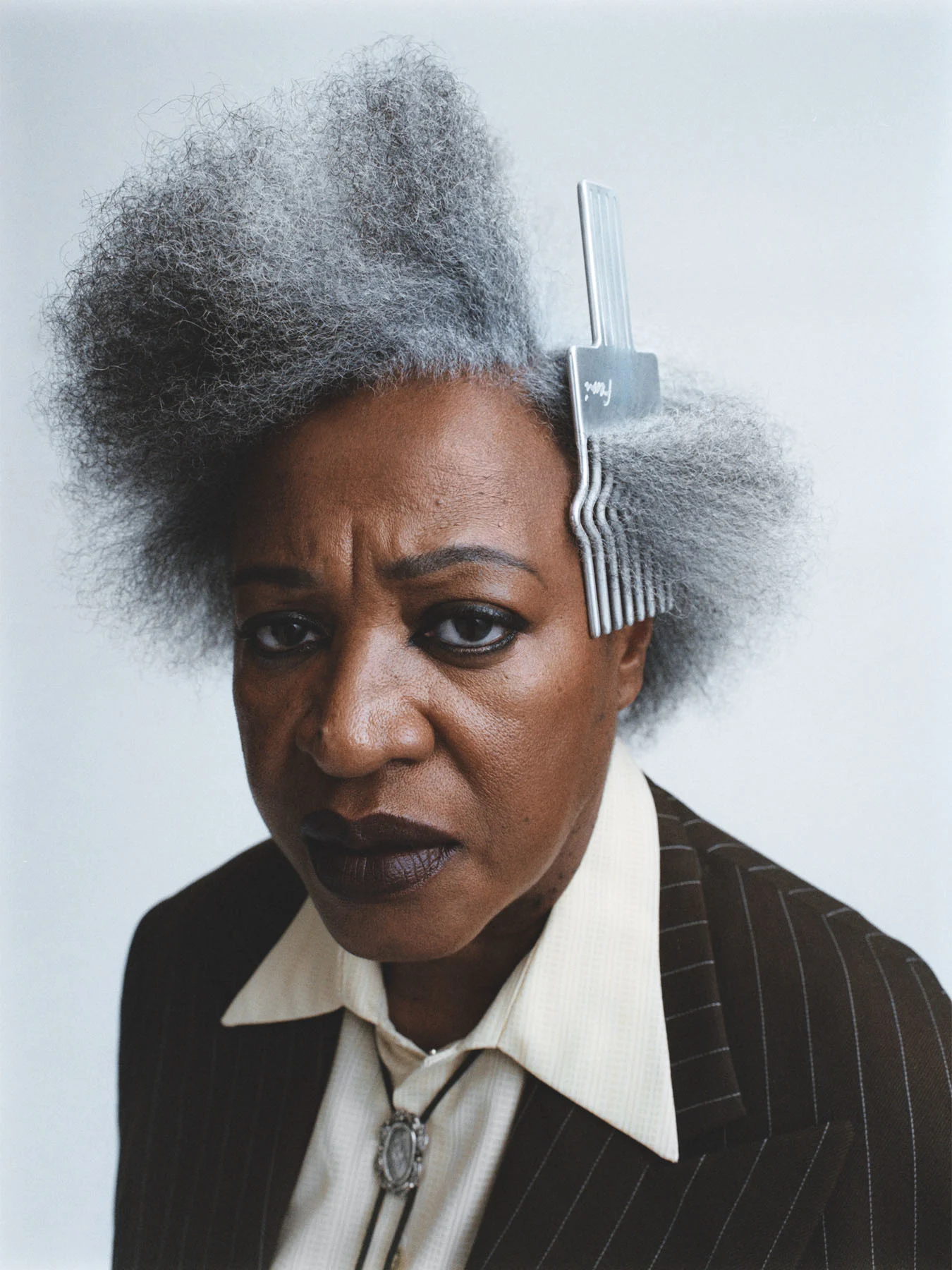
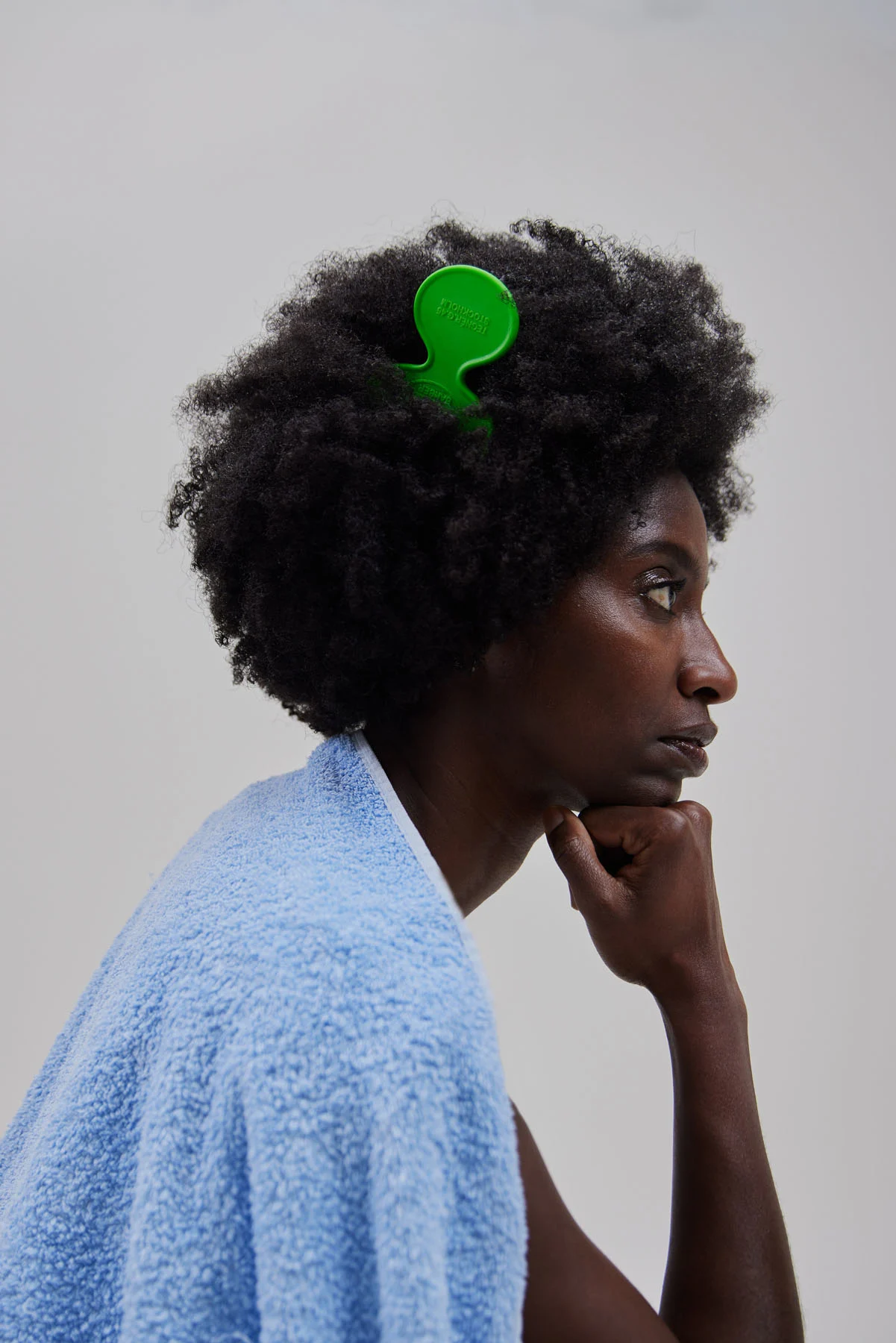
“Syntax” continues the research that began with the designer's previous project “Afropicks.” He had vivid memories of combing his hair with the picks his mother gave him as a child, but he was frustrated with the lack of grooming products for Black hair in his native Stockholm. Through that project, he also explored the diversity of Black and mixed-race identity in Sweden which led the designer to interview eight different people of African descent about their lives and perspectives on what it means to be Swedish, with resulting combs named after and inspired by interviewees. With his reimaging of Afro combs, Skinner reminds us of the politics of hair, representation and belonging, yet he elevates what might be seen as everyday functional objects into works of art and collectable objects.
Femi
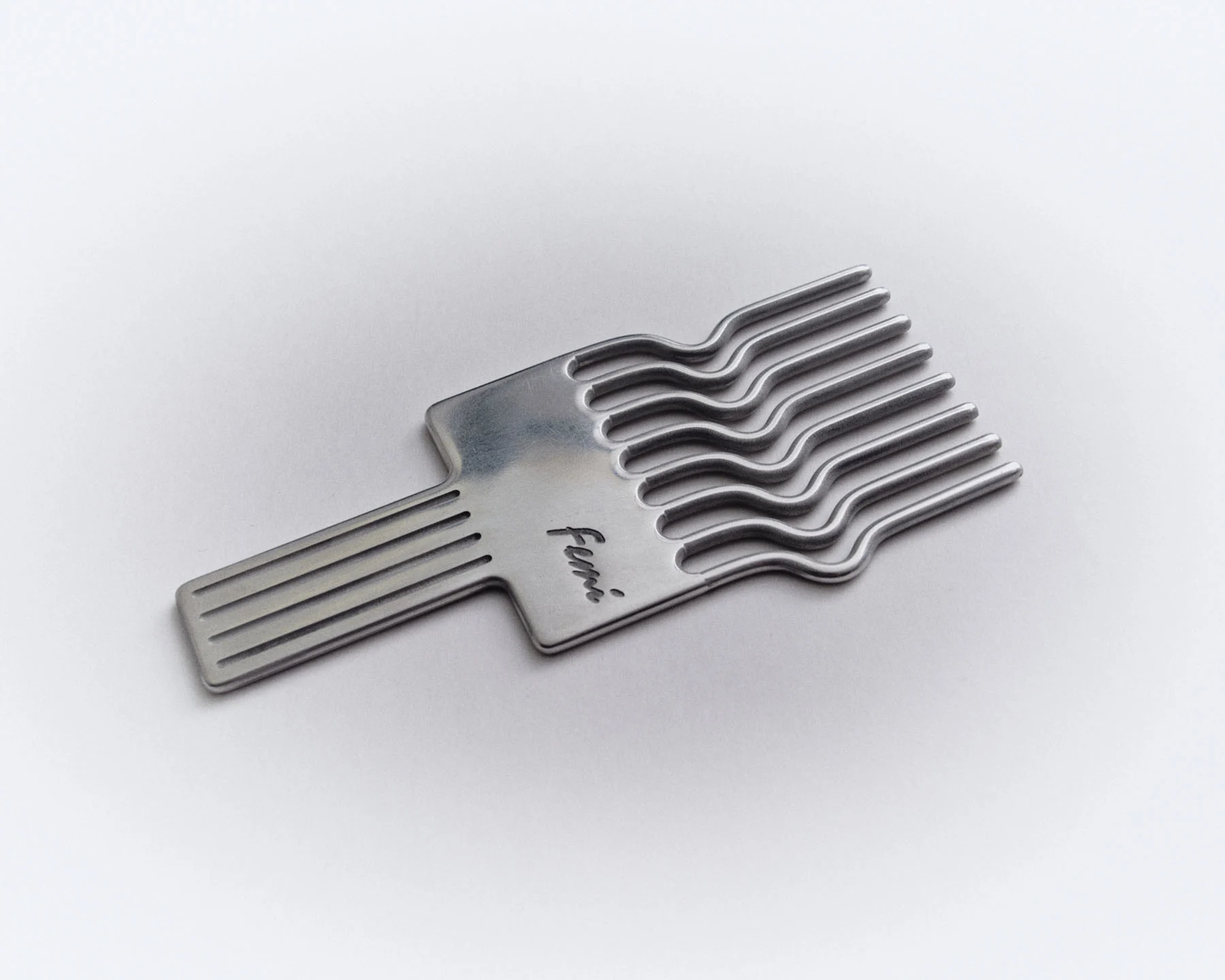
“The name Femi (a diminutive of Olufemi) comes from the Yoruba ethnic group in Nigeria and means “The Lord Loves Me.” This comb is inspired by the perspectives of someone I interviewed for my previous collection who is of dual heritage, and he expressed a sense of his identity stemming from the context of his heritage, rather than his nationality. This message stuck with me as my own biracial experience has been complex and at times impossible to translate into words. The comb is made from aluminium and its waved tooth represents a Black, mixed-race perspective where fluidity becomes a symbol of strength and resistance against the fragmentation of one's identity. The ”Femi” comb is also part of the permanent collection at the National Museum, Stockholm.”
Ceremony

“In the long and extensive line of ancient combs, its symbolism varies depending on when and where it’s been used. It ranges from a simple tool to a symbol of social status, compassion, or femininity. Drawing on history, I worked intuitively to explore the inherent power carried in this object. Throughout, the designs are overlapping times and places in a collective consciousness. “Ceremony” is inspired by the first excavations of ivory combs, dating back some 6000 years ago. The poignant characteristics of the “Ceremony” comb represent authority but also suggest a futuristic narrative where it serves a ceremonial purpose within a tribe. This piece is functional but gravitates also towards being both a sculpture and home accessory, rather than something you carry with you.
Monument
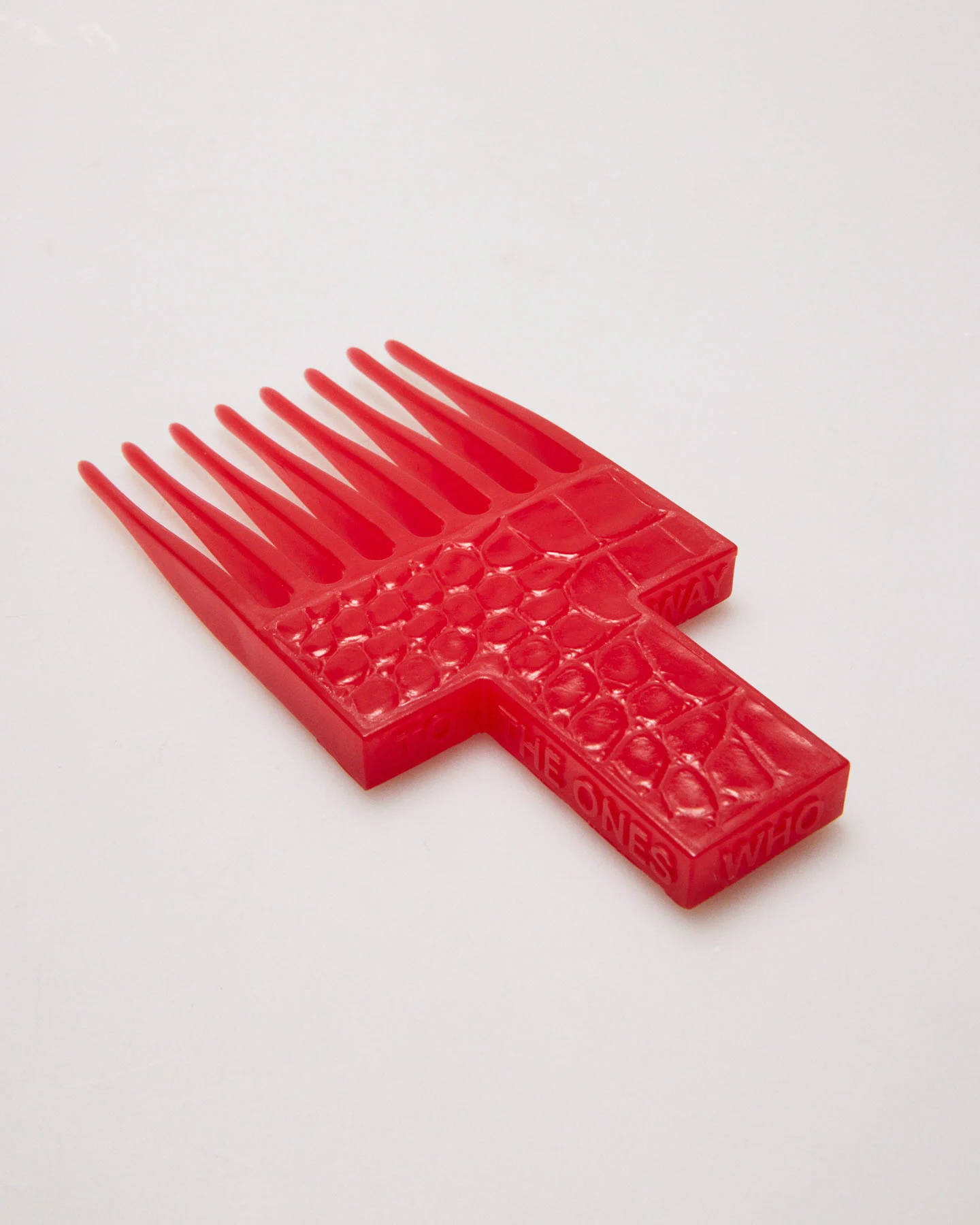
Monument is inspired by monoliths and tombstones. It’s also dedicated to our ancestors, to those who came before us, to those who struggled and made sacrifices for the freedom and rights of future generations. The text “To the Ones Who Paved the Way” runs along the sides of the handle as a way to commemorate and express gratitude to these heroes. The red color along with a crocodile skin pattern stands for love, strength and ancient wisdom, something we should carry on into the future. Just like the historical combs, I want to imbue the modern ones with messages. This comb combines 3D printing with leather patching and casting techniques that enable low-scale production in my studio. It gives volume and detangles hair types 3a-4c.
Spine
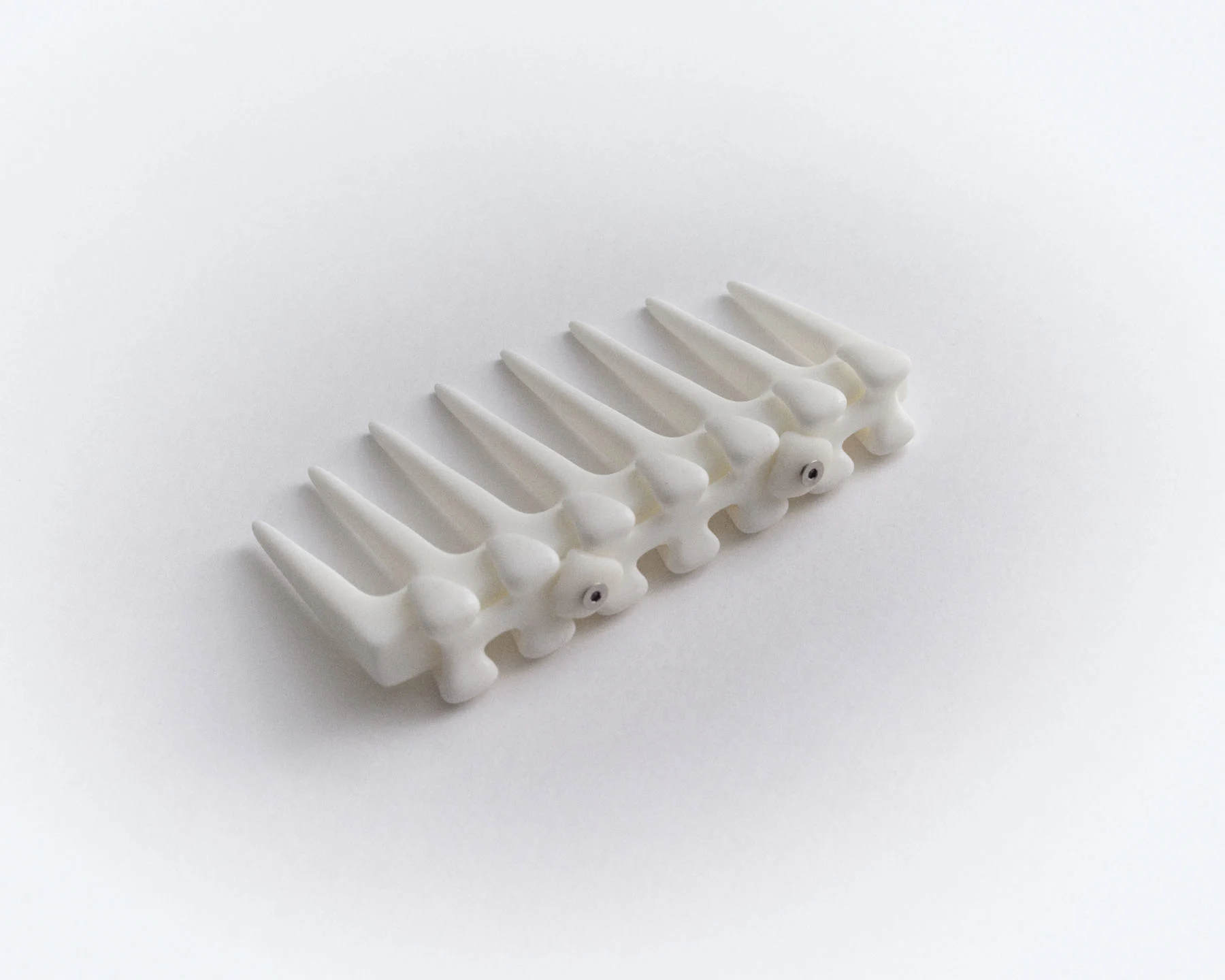
Historically, bones were a common material used to carve out combs and for “Spine,” I adopted a futuristic take on this production method, where the actual bone shape becomes the symbol itself. I find the pattern of repetition and consistency interesting. The spine symbolizes strength of character. It’s also seen as the axis of our being, a support structure for the mind and body where high levels of energy travel. I imagine this comb to come from a time and place where it accumulates those energies when you comb your hair. This piece does not have the traditional silhouette that's usually associated with an afro comb, but excavations of combs without handles are common. In “Spine” and throughout the collection I apply a design notion that seeks to elevate the object from a utility into an exclusive beauty tool, similar to what has been done with sunglasses over the years.
Afrospecialist
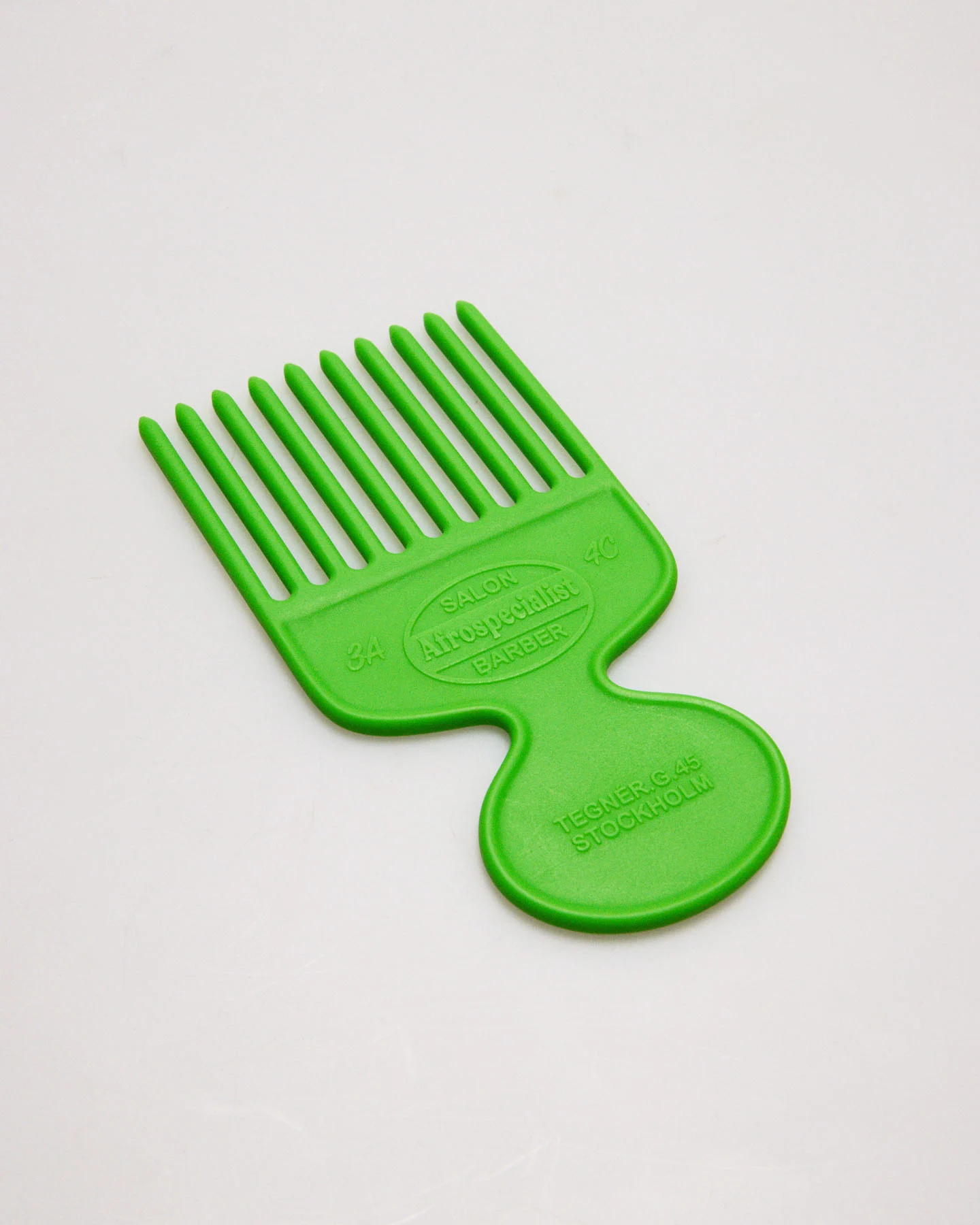
The “Afrospecialist” is dedicated to my barber who provides a safe space where I personally find both great support and inspiration. With its timeless design, I want to honor barber shops around the world that create communities and imbue a rare blend of culture, friendships and conversations transcending beyond hair. The modern classic design also reminds me of the combs I used growing up which brings back good memories. This comb has evolved from my personal experiences of Black hair culture.

